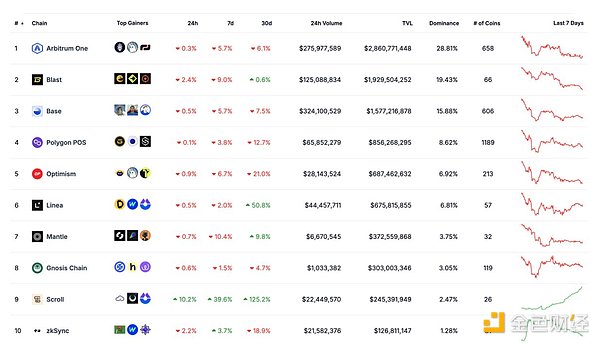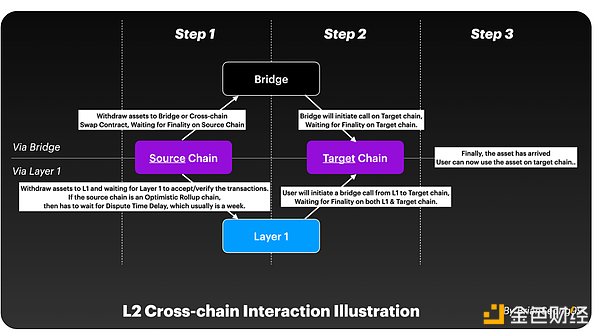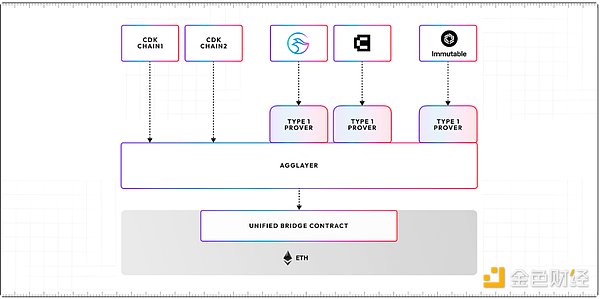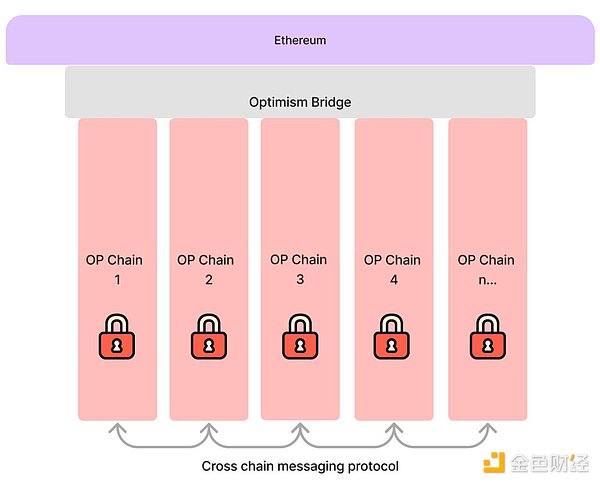Author: Brian Seong Source: X, @BrianSeong99 Translation: Shan Ouba, Golden Finance
Open with the ultimate statement: "Seamless cross-chain liquidity access is a must!"
1. Easily deploy new L2
With @0xPolygon's CDK, @Optimism's OPStack, @arbitrum's Orbit, and many other RaaS services, it is now easier to deploy L2. However, liquidity between chains has become more fragmented. These are just the top 10, and there are countless more.

2. Cross-chain user experience is still a major problem

Due to user experience issues, cross-chain interactions have become a headache. Here’s the user journey:
By Layer 1:
Extract liquidity from source chain to L1. Wait. (If it’s Optimistic Rollup, there’s a challenge period, usually set to 7 days on most chains).
Add liquidity from L1 to target chain. Wait.
Start trading on target chain.
By Bridge:
Extract liquidity from source chain to bridge contract. Wait and pay a premium while taking the risk of trusting a third party to bridge.
The bridge relay calls the minting operation on the target chain. Wait.
Start a transaction on the target chain, which may be a wrapped token.
3. Introduction to AggLayer and Superchain

AggLayer solves the problem of liquidity fragmentation, which leads to capital inefficiency and weakens network effects. It acts as a unified layer that enables low-latency trustless transactions between blockchains, enhancing interoperability.
In simple terms, think of it as a decentralized protocol between L1 and L2. It cannot generate new blocks, but it can aggregate blocks of connected chains. This enables chains connected to AggLayer to securely establish asynchronous cross-chain data exchange through settlement on AggLayer.

Superchain, created by @Optimism, is an L2 chain network based on OPStack, which share security, governance, and standardized technology stacks (#OPStack). By treating chains as interchangeable computing resources, it provides blockchain scalability.
In simple terms, Superchain provides a cross-chain data exchange standard for all #OPStack chains, enabling various messaging protocols with different security and speed configurations, as well as cross-chain transaction ordering through a shared sorter.
Goal: Enable efficient communication between chains
3.1 Supported L2 Chain Stacks (Chain Customizability)
AggLayer will support:
As long as a chain can provide appropriate inputs to pessimistic proofs, it can connect to AggLayer!
3.2 L2 Security
AggLayer is secured by Zero Knowledge Proofs (ZK). This allows all chains capable of generating compatible block proofs to integrate into the AggLayer ecosystem. For example, Polygon PoS sidechains and Optimistic Rollups chains can generate pessimistic proofs to establish shared asset states in unified liquidity, and chains such as zkEVM can generate validity proofs to join AggLayer. AggLayer tracks asset states on all chains. Local chain states are used to build pessimistic proofs, which are then verified on L1. If a chain attempts to withdraw more tokens than it has deposited, the proof will fail to verify.
Superchain is strictly built for OP Stack chains. All chains are connected to a shared bridge and a shared sorter, so all OP Stack chains will reach finality on L1 through the challenge period of Optimistic Rollup. The typical setting for OP Stack chains is a 7-day fraud proof period, while @Blast_L2 (also an OP Stack chain) is set to 14 days.
3.3 Cross-chain interoperability
AggLayer's interoperability is achieved through unified bridging and pessimistic proofs.
Unified bridging: Allows all chains connected to AggLayer to access a shared local asset pool without fee-extracting intermediaries or additional trust assumptions.
Pessimistic proofs: Pessimistic proofs of all chains connected to AggLayer will allow users to move assets from chain A to chain B without going through the intermediate step of L1.
Proof aggregation: AggLayer will check cross-chain transactions in the message queues of the source and target chains. If cross-chain transactions have matching transactions on both chains, they are accepted; otherwise, the transactions are rolled back to ensure atomicity (which is part of the unified bridging process). For more information on AggLayer, check out @_bfarmer's blog.
When AggLayer is used with a shared sorter (such as @EspressoSys), it can effectively achieve universal synchronous composability.
Superchain's interoperability is achieved through two types of cross-chain interactions.
Shared sorter method (atomic/synchronous transactions): This is achieved by creating a reference between two transactions on two different chains and having the shared sorter accept both transactions or not accept any of them. The shared sorter will bear the risk of atomic cross-chain transaction acceptance.
Bridge system (non-atomic transactions, bridge-dependent): This is a typical cross-chain bridge system. For more information on different bridge standards, see the image in this tweet.
3.4 Ecosystem
AggLayer:
Currently connected chains: @XLayerOfficial, @AstarNetwork, @0xPolygon zkEVM, @swellnetworkio, etc.
@0xPolygon PoS is connecting to AggLayer, working with @SuccinctLabs.
Many other non-EVM blockchains will be connected to AggLayer to unify liquidity and the user experience of cross-chain interactions, for example @union_build is building a gateway connecting the IBC chain to AggLayer.
Superchain:
Current chains: famous onchainsummer@base, @Optimism, @modenetwork, @ourZORA, etc.
There are many other chains that have also joined the OPStack ecosystem.
3.5 Sovereignty and Cost
Since AggLayer does not require revenue sharing with connected L2s, the daily cost of hosting L2 on AggLayer is mainly server fees, ensuring it is online 24/7.
All chains will have the right to decide their chain sovereignty settings, as long as it can provide the inputs required to generate pessimistic proofs, it is a good chain!
For Superchain, in addition to hosting costs, all chains must comply with chain laws, of which 15% of Superchain sorter revenue is used to fund RFPs.
4. The future of L2 cross-chain interoperability
Vitalik mentioned:

The following are some of my personal opinions:
1.ZK: The future of Ethereum L2
Zero-knowledge (ZK) technology is becoming Ethereum’s second The ultimate solution for decentralized, secure scaling solutions in the Layer 2 ecosystem. In order to achieve a truly user-friendly experience in future blockchain operations, major Optimistic Rollups may need to turn to adopting ZK principles.
2. Aggregation of Layer 2 Solutions
The aggregation and integration of various Layer 2 platforms represents an evolving trend that reflects the growing interoperability between different blockchains today—a development similar to countries coming together under international trade agreements such as the World Trade Organization (WTO). By removing barriers and enhancing compatibility between different chains, this trend paves the way for broader adoption of blockchain technology.
3. The rise of Rollup as a service tools and AppChains Rollup as a service tools simplify the process of creating new layers, while infrastructure such as AggLayer and Superchain facilitate liquidity guidance. Therefore, there is a significant shift from simply deploying additional EVM-compatible layers to building more complex chains tailored for various application scenarios. This approach aims to provide users with a diverse experience in the L2 environment-providing comprehensive support for all imaginable blockchain use cases.
In the future, each institution/company/project/alliance may have its own L2, which can communicate freely and seamlessly with each other. Each L2 only needs to focus on its own product construction without worrying about guiding chain-level resources.
 Anais
Anais
 Anais
Anais Brian
Brian Weiliang
Weiliang Miyuki
Miyuki Alex
Alex Weiliang
Weiliang Brian
Brian Miyuki
Miyuki Alex
Alex